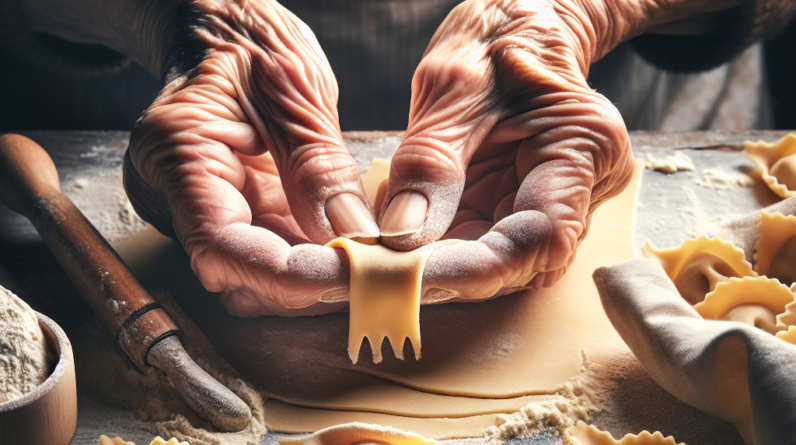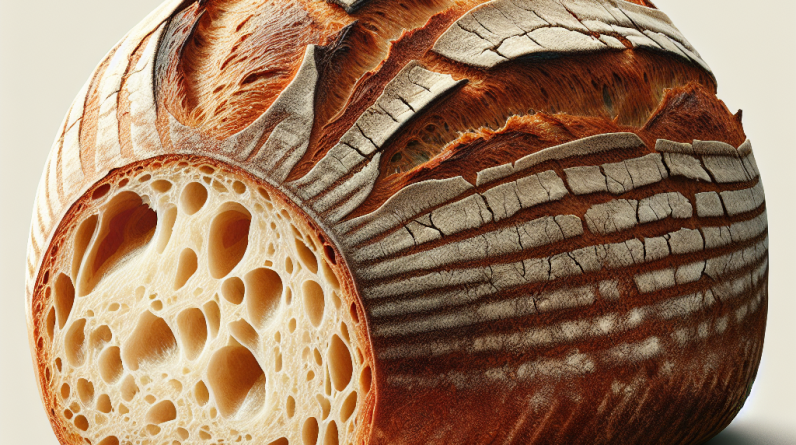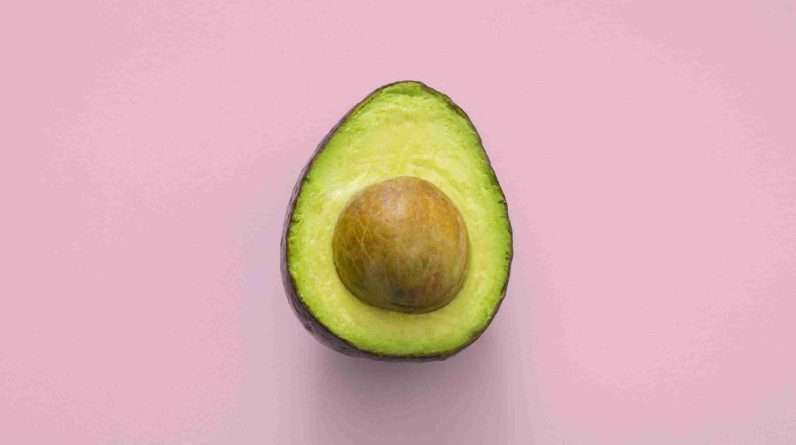When it comes to savoring the rich and tantalizing flavors of Italian cheeses, storing and aging them properly is key. Tucked away in the depths of cheese cabinets and refrigerators, these delectable wheels of goodness require the right conditions to truly reach their flavor potential. But fear not, as we are here to guide you through the art of cheese storage and aging. From the creamy smoothness of Mozzarella to the robust tang of Parmigiano Reggiano, discover the tricks of the trade that will help you unlock the true essence of these beloved Italian cheeses. Prepare to embark on a delectable journey of taste and learn how to master the art of cheese preservation.
Choosing the Right Cheese for Aging
Selecting traditional Italian cheeses is an essential step in the process of aging cheese. Italian cheeses are known for their rich flavors and unique characteristics, making them ideal candidates for aging. Some popular choices for aging include Pecorino Romano, Parmigiano Reggiano, Gorgonzola, Asiago, Provolone, and Mozzarella. These cheeses have different textures, flavors, and aging requirements, allowing for a diverse selection to suit various tastes and preferences.
When selecting cheeses for aging, it is important to consider the aging process itself. Aging cheese is a delicate balance between time, temperature, and humidity, which ultimately affects the flavor and texture of the cheese. Each cheese has its own optimal aging requirements, so it is crucial to understand the aging process for the specific cheese being aged.
Understanding the flavor profiles of the chosen cheeses is also essential. Different cheeses develop unique flavors and aromas during the aging process. For example, Pecorino Romano tends to become tangier and saltier as it ages, while Parmigiano Reggiano develops a nutty and complex flavor. Therefore, having knowledge of the desired flavor development can help in selecting the appropriate cheese for aging.
Creating an Ideal Storage Environment
To ensure optimal flavor and texture development during the aging process, creating an ideal storage environment is crucial. Temperature and humidity control are the two main factors to consider.
Maintaining a consistent temperature is important for proper aging. Most Italian cheeses require a temperature range between 50°F and 55°F (10°C and 13°C) for aging. Fluctuations in temperature can lead to inconsistent aging and spoilage. Therefore, it is recommended to use a dedicated cheese refrigerator or a wine cooler with temperature controls to maintain a stable environment.
Humidity control is equally important. Italian cheeses generally require a humidity level of around 80% during aging. This level of humidity helps prevent the cheese from drying out or becoming too moist. Using a humidity- controlled environment or placing a small dish of water in the storage area can help maintain the desired humidity level.
Choosing the right storage location is also a crucial factor in maintaining the quality of aged cheeses. Ideally, the storage area should be cool, dark, and well-ventilated. Avoid storing the cheeses near strong odors, as cheese can absorb unwanted flavors. It is also important to keep the cheeses away from direct sunlight, as excessive heat and light can negatively impact their flavor and texture.
To avoid cross-contamination, it is vital to store different types of cheese separately. The flavors and aromas of certain cheeses can easily transfer to others, altering their original characteristics. Using separate storage containers or wrapping each cheese individually can help prevent cross-contamination.
Wrapping and Packaging Techniques
Proper wrapping and packaging techniques play a significant role in maintaining the quality and flavor of aged Italian cheeses. Here are some commonly used methods:
Using cheese paper is a popular choice for wrapping aged cheeses. Cheese paper is specially designed to allow the cheese to breathe while providing a protective barrier against external elements. It helps maintain the optimal moisture level while preventing excessive drying or excess moisture. Simply wrap the cheese tightly with cheese paper, ensuring that all sides are covered.
Wax or parchment paper is another option for packaging aged cheeses. Wax paper creates a barrier against moisture loss and protects the cheese from the outside environment. Parchment paper, on the other hand, allows the cheese to breathe while still providing some protection. When using wax or parchment paper, it is crucial to cover the entire cheese, ensuring there are no exposed areas.
Applying multiple layers of wrapping can offer additional protection and help maintain the ideal aging conditions. However, it is important not to suffocate the cheese by applying too many layers, as it still needs to breathe and develop flavor.
Storage Containers and Methods
The choice of storage containers and methods can greatly impact the aging process and the quality of the resulting aged Italian cheeses.
Wooden boxes and crates are often used for aging certain types of Italian cheeses. The porous nature of wood allows the cheese to breathe while providing a stable environment for aging. This method is commonly used for cheeses like Parmigiano Reggiano and Pecorino Romano.
Cheese aging caves are another option for aging Italian cheeses. These specially designed caves provide an ideal environment with consistent temperature and humidity levels. The caves also allow for proper airflow, ensuring even aging of the cheese. Aging in caves can enhance the flavors and textures of the cheeses, resulting in a more complex and nuanced end product.
Cheese aging bags are a convenient option for home aging. These bags provide a controlled environment for aging and are designed to allow the cheese to breathe while protecting it from external elements. The bags are easy to use and can be hung or placed in a designated aging area.
Regular Inspection and Maintenance
Regular inspection and maintenance are essential to ensure the proper aging of Italian cheeses. Here are some key tasks to perform:
Checking for signs of spoilage is crucial to prevent the spread of mold or bacteria. Inspect the cheeses regularly for any signs of discoloration, sliminess, or off-putting odors. If any cheese shows signs of spoilage, it should be removed immediately to prevent contamination of other cheeses.
Cleaning storage containers is important to maintain a clean and hygienic environment for aging. Regularly clean the containers using a mild soap or vinegar solution, ensuring that all residues are thoroughly removed. Proper cleanliness can help prevent the growth of unwanted bacteria or mold.
Rotating and turning cheeses can help ensure even aging and prevent any parts from drying out. This is especially important for large wheels or blocks of cheese. Regularly rotate the cheeses and turn them over to promote uniform aging and flavor development.
Proper Aging Times for Different Cheeses
Different Italian cheeses have varying optimal aging times. Here are some general guidelines for popular Italian cheeses:
- Pecorino Romano: Pecorino Romano is typically aged for a minimum of 8 months, but it can be aged for up to 2 years for a more intense flavor.
- Parmigiano Reggiano: Parmigiano Reggiano is aged for a minimum of 12 months, but cheeses aged for 24 months or longer are highly prized.
- Gorgonzola: Gorgonzola is typically aged for 3 to 4 months, although some versions can be aged for up to 6 months for a stronger character.
- Asiago: Asiago is aged for different lengths of time, with younger Asiago aged for around 2 to 4 months and older Asiago aged for more than a year.
- Provolone: Provolone is aged for various durations, ranging from a few months to several years. Aged Provolone develops a sharper and more complex flavor.
- Mozzarella: Mozzarella is not traditionally aged for long periods and is usually consumed fresh. However, some variations can be aged for a few months to enhance flavor.
These are general guidelines, and the aging times can vary based on personal preference and desired flavor profiles.
Understanding Flavor Development during Aging
Flavor development during aging is a fascinating process influenced by various factors, including microbes, enzymes, and chemical reactions.
Microbes, such as bacteria and molds, play a crucial role in the aging process. They break down the proteins and fats in the cheese, leading to the development of complex flavors and textures. Different microbes create different flavor profiles, resulting in the unique characteristics of each type of aged cheese.
Enzymes naturally present in the cheese also contribute to flavor development during aging. These enzymes break down the proteins into smaller peptides and amino acids, resulting in the release of aromatic compounds. The breakdown of proteins contributes to the development of distinctive flavors and aromas in aged cheeses.
Chemical reactions, such as oxidation and rancidification, occur during the aging process and can impact the flavor of the cheese. These reactions can lead to the formation of new compounds, creating unique flavor characteristics. The length of aging time and the storage conditions can influence the types and intensities of these chemical reactions.
Flavor changes over time are an important part of the aging process. Initially, young cheeses may have milder flavors, which intensify and become more complex as they age. Aged cheeses often develop deeper, richer flavors with hints of nuttiness, sweetness, or tanginess. The aging process allows for the development of unique flavor profiles that add depth and complexity to the cheese.
Pairing Aged Italian Cheeses with Accompaniments
Pairing aged Italian cheeses with suitable accompaniments can enhance the taste and enjoyment of the cheese. Here are some suggestions for complementary flavors:
Bread and crackers are classic accompaniments for aged cheeses. Crusty baguettes, artisanal bread, or crisp crackers provide a neutral base that allows the flavors of the cheese to shine through. The contrast in textures between the cheese and the bread or crackers adds to the overall dining experience.
Fruits and jams can provide a sweet and tangy contrast to the rich flavors of aged cheeses. Grapes, figs, pears, or dried fruits complement the cheese’s taste and provide a refreshing palate-cleansing effect. Jams and chutneys, such as quince paste or fig jam, offer a delightful combination of flavors.
Wine and other beverages are often paired with aged cheeses to create a harmonious balance of flavors. Red wines, such as Barolo or Chianti, pair well with hard, aged cheeses like Parmigiano Reggiano. White wines, such as Sauvignon Blanc or Gewürztraminer, pair beautifully with creamy, rich cheeses like Gorgonzola. Experimenting with different beverages can open up new flavor experiences.
Aging Italian Cheeses at Home
Aging Italian cheeses at home can be a rewarding and exciting endeavor. While the aging process is often associated with professional settings, there are techniques that can be adapted for home use.
Adapting techniques for home use starts with selecting cheeses suitable for aging in smaller quantities. Small wheels or blocks of cheese can be aged using a controlled storage environment, such as a dedicated cheese refrigerator or a wine cooler. By mimicking the ideal temperature and humidity conditions, it is possible to achieve excellent results at home.
Small-scale aging experiments can also be conducted to explore the effects of different aging times and conditions on the cheese. This can help develop a better understanding of the aging process and allow for personalized adjustments to suit individual preferences.
Special considerations for home aging include ensuring proper hygiene and cleanliness, regularly inspecting and maintaining the cheeses, and storing them separately to prevent cross-contamination. By following these guidelines, home cheese aging can yield delicious and unique flavors that are tailored to one’s own preferences.
Aging Italian Cheeses in Professional Settings
Aging Italian cheeses in professional settings involves larger-scale operations and specific regulations. The process requires specialized facilities and collaborations with cheese experts.
Large-scale aging facilities are designed to accommodate a significant quantity of cheeses and provide optimal aging conditions. These facilities utilize advanced temperature and humidity controls, monitoring systems, and aging techniques to ensure consistent and high-quality results.
Aging regulations and certifications play a crucial role in maintaining the authenticity and quality of aged Italian cheeses. For certain protected designation of origin (PDO) cheeses like Parmigiano Reggiano, there are specific rules and guidelines that govern the aging process. Following these regulations helps preserve the traditional methods and ensure the cheese’s authenticity.
Collaboration with cheese experts is beneficial for aging Italian cheeses in professional settings. Cheese experts possess valuable knowledge and experience in the aging process, including understanding the intricacies of each cheese variety. Their expertise can help troubleshoot potential issues and ensure the best possible outcome.
In conclusion, properly storing and aging Italian cheeses is a meticulous process that requires careful consideration of cheese selection, storage conditions, wrapping techniques, and aging times. By following the guidelines outlined in this article, both home enthusiasts and professionals can embark on a flavorful journey of aging Italian cheeses and enjoy the complex and nuanced flavors that result from this artful process.










